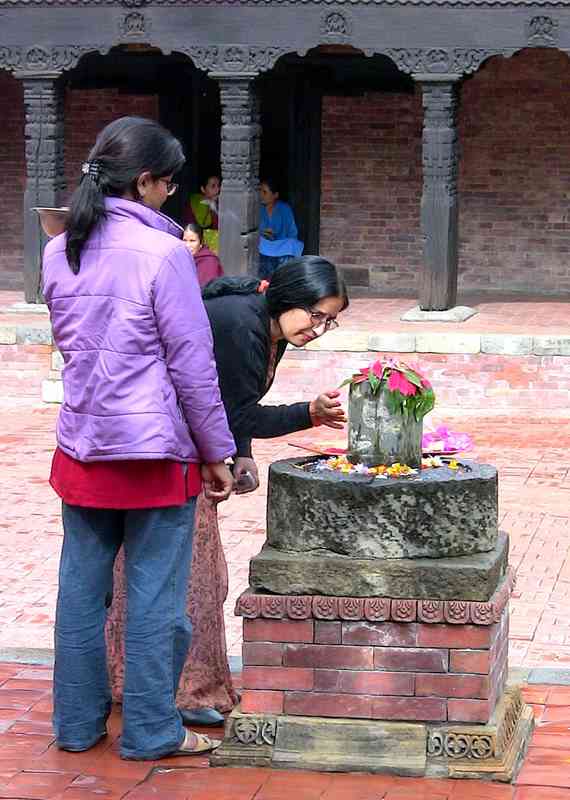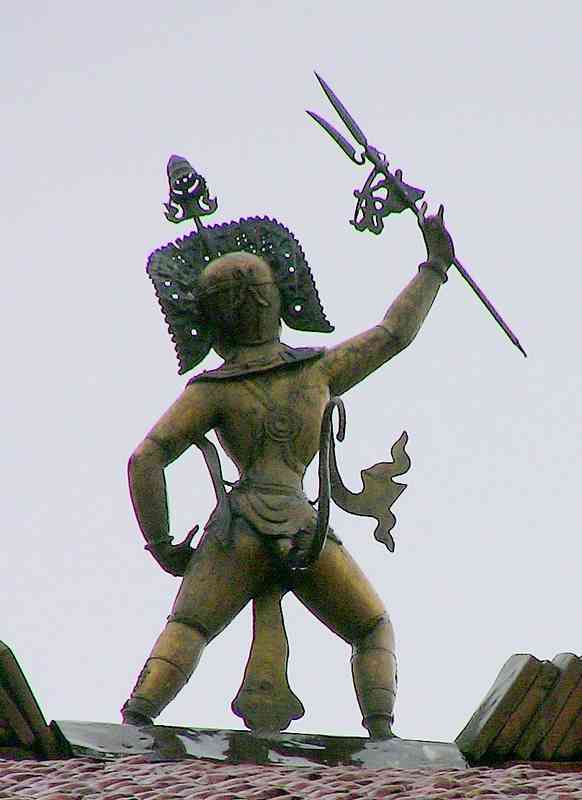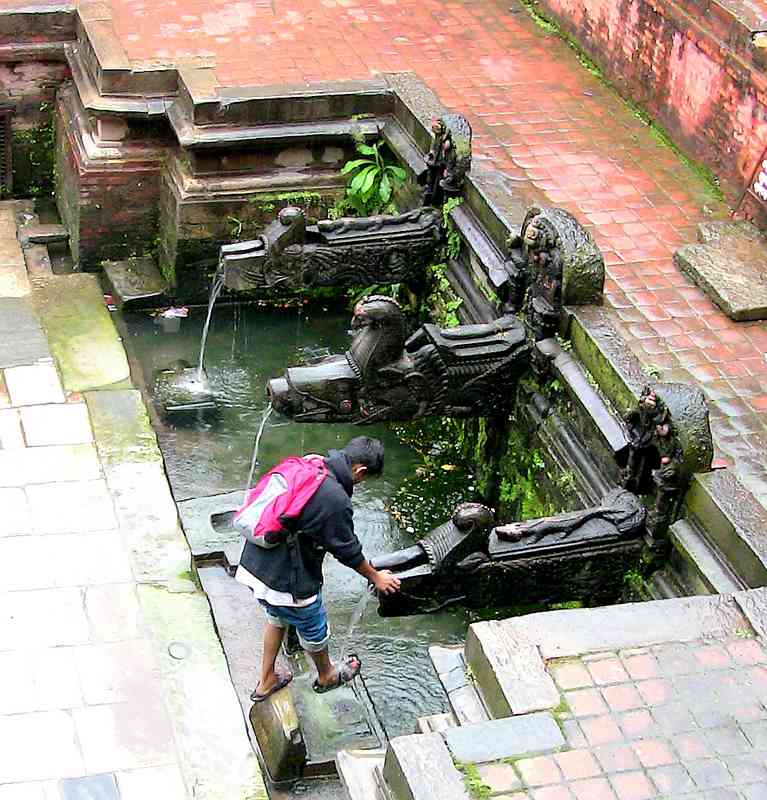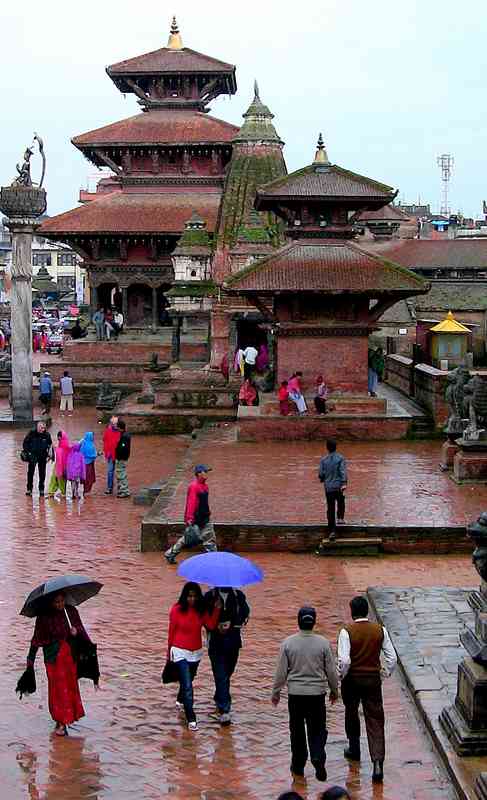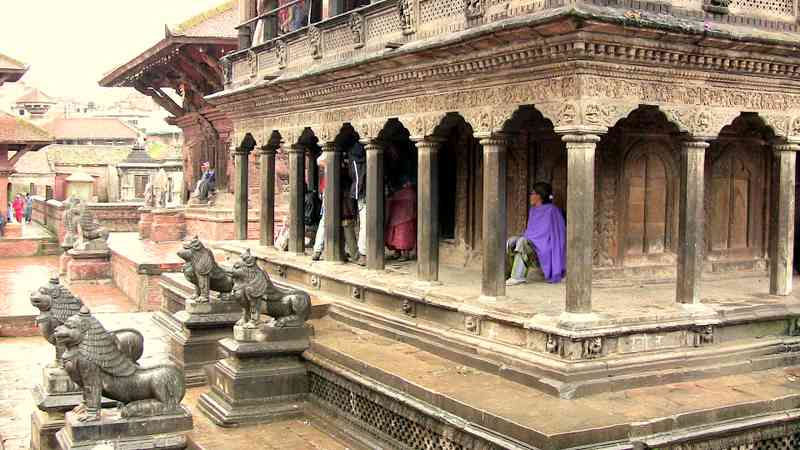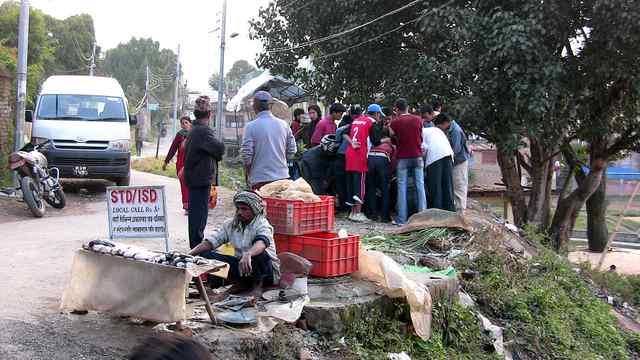November 13, 2007 - Reflections on spending a week in
Kathmandu.
It is the enthusiasm and friendliness of the people here in
Kathmandu which which I have been enjoying. It is the
eagerness that Nepali's talk and share and joke and tease that makes
the conversations delightful. The lady selling medicinal herbs on
the curbside is eager to tell me how this plant is for cancer, that one
for stomach troubles, the other for sexual power ... etc. If I
were an ethnopharmacologist, or an ethnomusicologist, or a geologist,
or a ...... I'd be in heaven.
I met Ms. Nanda Kulu selling musical
instruments in her shop in the tourist district. After chatting
and showing an interest in her and Nepal beyond getting a good deal on
a flute, she presented me with her brochure for her charitable
foundation: Mitrata (www.mitrata.org)
which she runs with support of Dr. Christine Schutz in the US.
Her story is that she became an orphan at about 11 and had a very hard
life. She never went to school. She was married to an older Newar man
who brought her to Kathmandu. He made musical instruments and had
a store. She turns out to be extraordinarily capable. She
helped him build his business and then went overseas, Europe and the US
looking for sponsors for a home for underprivileged children, such as
she has was. She has accomplished building such a home. I
visited it. Pictures on the web. They are now serving 31
girls and 14 boys. By Nepali standards it's a middle class
environment. Every child has their own bed. Every child is fed
and goes to school. One girl is albino and was rejected by her
family. Here in Kathmandu she is mistaken for a western
child. Mrs. Kulu never went to school, but reads well enough to
manage the bureaucracy of Nepal and the US (????), handles her own
email, manages boards of directors and hires and manages half a
dozen staff, mostly extended family. If you want to send a
donation she will do more good with it that if you donate to an
organization that has layers of administration.
Every taxicab driver is a
character. The fellow I drove home with the other night had
worked two years in Iraq driving trucks. He said he came home
after his petrol truck was bombed and he barely made it out. He
has set up his extended family in his home. He has 2 wives.
I asked how that works. He said the key is "communication".
Nepali's are good at that. They talk, talk, talk ....until things
are worked out. He has 2 daughters by his first wife and a son by
his second. They all live together and he says there is much
"maya". So far, he says. He says he doesn't know what will
happen in the future. He bought his taxi with proceeds from his
Iraq work and when he's not driving it he has a couple other fellows
driving it. I expect he will have several taxi's soon. He
says his American boss in Iraq, a contractor, sends him emails
regularly offering him higher wages - $900 a month rather than
$700. I think he'd go back to Iraq but he has parents in
their 80s and young children. He said that he likes the Americans
he worked with but the government rules and paperwork drove him nuts.
He prefers living in Nepal because there aren't all the forms and
rules. We agreed that Kathmandu is being ruined by all the cars
and pollution and life in the village is better. Just no jobs
there, besides farming. He's voting for the Maoists. He
doesn't like their use of violence, but he likes that they are making
change happen. One of the few Nepalis I've spoken with who are
politically engaged.
Yesterday I attended a presentation
by a Bangladeshi scientist who has developed a better filter for taking
arsenic out of well water. Arsenic in the water is a serious
problem in Nepal also. I am astounded to learn that most people
in Bangladesh and Nepal have biologically safe drinking water because
most have wells over 100 feet deep. But Arsenic is a serious
problem. US standards require less than 1 (some unit);
acceptable by WHO standards is less than 10; many Nepali wells have
levels over 100 and some in Bangladesh have levels of 4000. There
are serious health problems. Millions of people are at
affected. The health organizations teach nutrition which can
ameliorate the effects and there are many filter programs. It
turns out that rusty nails in sand take the arsenic out. But the
rusty nails fail and the filters have problems. The Bangladesh
scientist, in collaboration with MIT, has developed an "iron matrix"
that lasts more than 5 years and extracts arsenic and many other
contaminants. Getting these filters out to the villages,
educating them on the use, and getting them used appropriately is in
the beginning stages. Some 30,000 filters are in use, some for 5
years. This is a small percentage of the need. Learn more
at http://www.filtersforfamilies.org/
Turns out this is a major development concern with much involvement by
scientists around the world. MIT has been much involved. A google
search on "Arsenic, Nepal, NGO" will tell more. What strikes me
as hopeful is that health problems are being solved, here in the
developing world.
There are schools everywhere. I mean
everywhere. Like we have Starbucks, Kathmandu has schools. This
culture has it figured out that education is the path to a more
affluent life. And there is wealth. New buildings are much more
common than old. Many are mansions. Many are unique. In the old
days every house was red and white. Now, every color you can
imagine. The beggars and the poverty, the people who are
not making it, are not commonly in evidence,except in the tourist areas
where conspicuous poverty is a livelihood. Virtually everyone on
the street has work, is buying presents for the holidays for family.
Cell phones and motorcycles and consumer items which require disposable
income are everywhere.
Tucked in amongst the new
buildings are the old temples: 500 and 1000 years old. Intricate
and haunting. The Newars of the Kathmandu Valley were the
artisans who built much of LLasa in Tibet. Long history of craft
and art. Come soon. Now these historic buildings are just part of the
street scene, with people lounging amongst archeological
treasures. In a few years, I expect, they'll all be behind fences
and glass.
Especially this time of year it is the
infectious high spirits, celebrations, fireworks, games, music, and
religious rituals that everyone here are enthusiastically engaged that
are in evidence. In most conversations, when I mention that I'd
been here nearly 40 years ago and how different it was, everyone says I
was lucky - those were the good old days before the noise and
pollution. Ah, we romanticize ... some time in the past, in the
future, in a wonderful, magical place like America (if you are Nepali)
or Nepal (if you are American) ... when life is, was, will be
perfect. I am so aware of Walt Whitman's insight:
"And will never be any more perfection than there is now."
Tim
PS - I've attached a few pictures below. Most are of people
amongst the temples of Patan. The last one, of a man sitting on the
ground selling fish; the sign STD/ISD means he has a cell phone people
for rent; the crowd behind is gambling; the Toyota van is brand new;
everyone is oblivious to the litter. This picture seems to me to
capture many typical aspects of Kathmandu culture.
